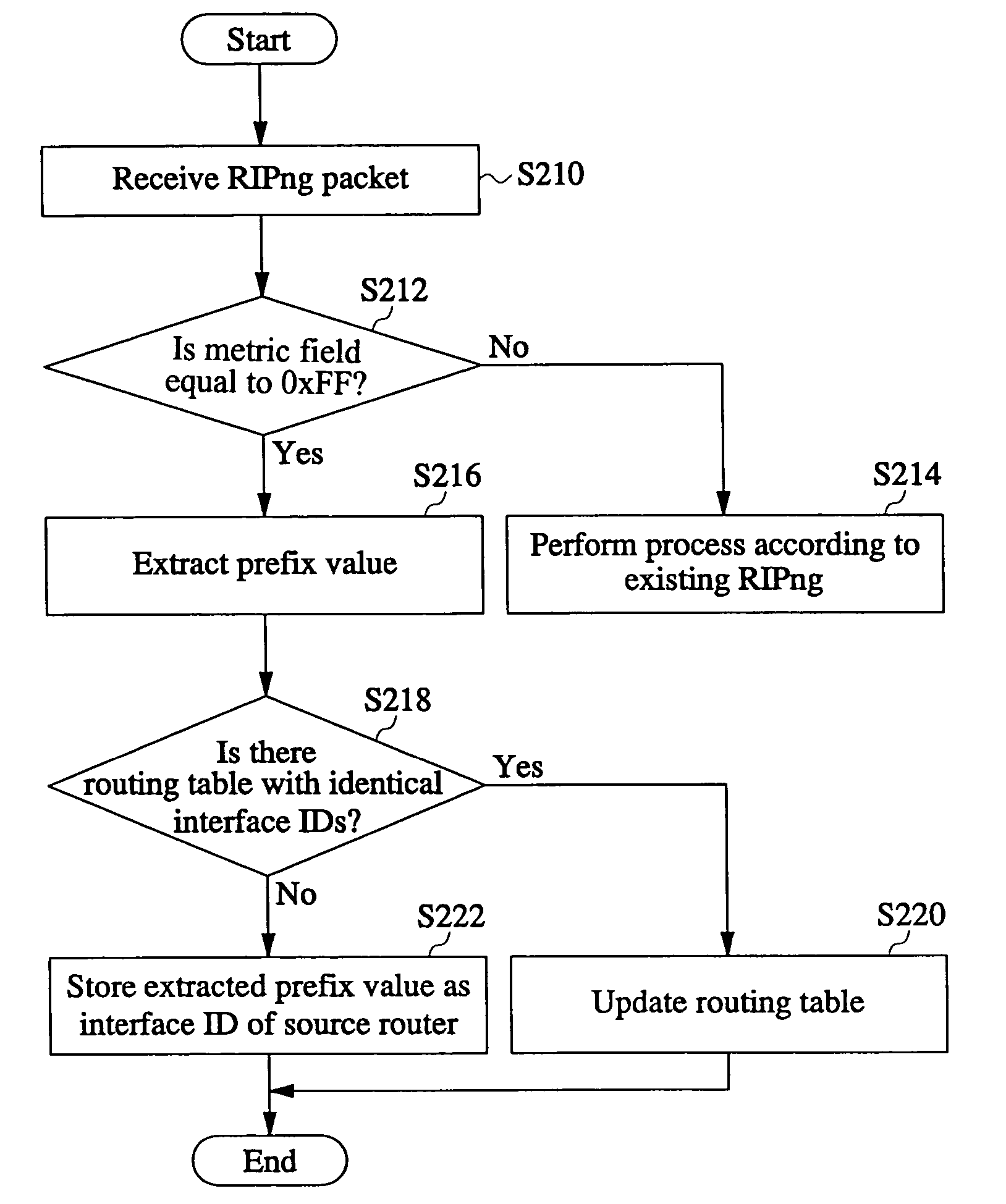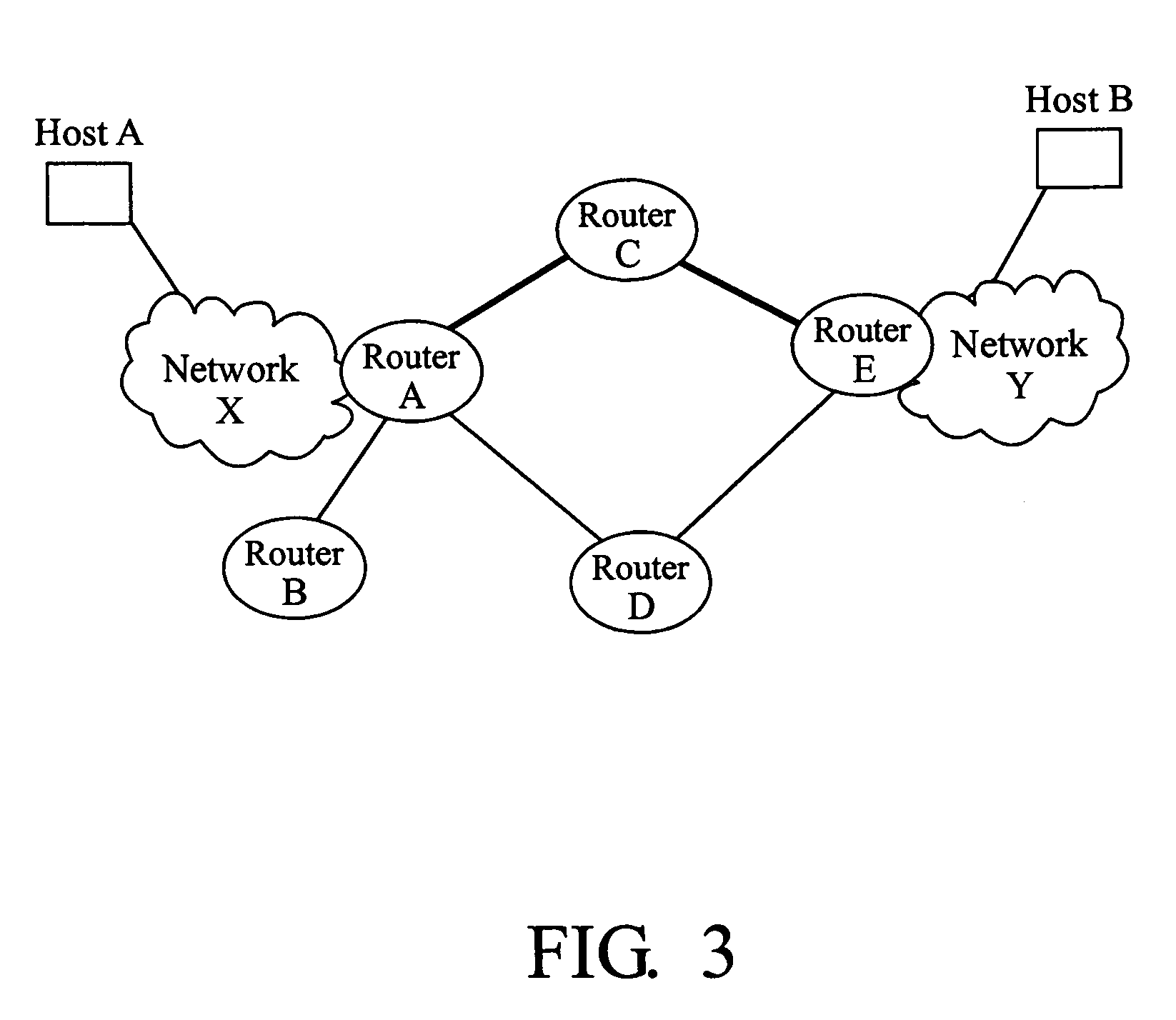Routing table management method using interface ID in the IPv6
a routing table and interface id technology, applied in the field of routing table management methods, can solve the problems of incompatibility between ipv6 protocols and ipv4 protocols, lack of mobility, lack of security, etc., and achieve the effect of preventing congestion phenomenon
- Summary
- Abstract
- Description
- Claims
- Application Information
AI Technical Summary
Benefits of technology
Problems solved by technology
Method used
Image
Examples
Embodiment Construction
[0054]Turning now to the drawings, to see an IPv6 routing table entry under management of the RIPng with reference to FIG. 1, the entry should include information on an IPv6 prefix 10 of a destination, a metric 16 for displaying a total cost needed to transmit Datagram to the destination, an IPv6 address 24 of a next router representing a nexthop, a route change flag 18 for informing whether a router has recently been changed, and a 30-sec (second) timer 20 and 22 for transmitting routing table information to a neighbor router.
[0055]The RIPng is a UDP base protocol, and transmits / receives a packet on a UDP port number 521. A RIPng packet includes three fields, i.e. a command (request or reply), version and routing table entry.
[0056]Also, each route table entry includes an IPv6 prefix 10, a route tag 12 for separating an interior router from an exterior router, a prefix length field 14 for deciding important bits in the prefix, and a meter 16 for defining a present destination meter....
PUM
 Login to View More
Login to View More Abstract
Description
Claims
Application Information
 Login to View More
Login to View More - R&D
- Intellectual Property
- Life Sciences
- Materials
- Tech Scout
- Unparalleled Data Quality
- Higher Quality Content
- 60% Fewer Hallucinations
Browse by: Latest US Patents, China's latest patents, Technical Efficacy Thesaurus, Application Domain, Technology Topic, Popular Technical Reports.
© 2025 PatSnap. All rights reserved.Legal|Privacy policy|Modern Slavery Act Transparency Statement|Sitemap|About US| Contact US: help@patsnap.com



